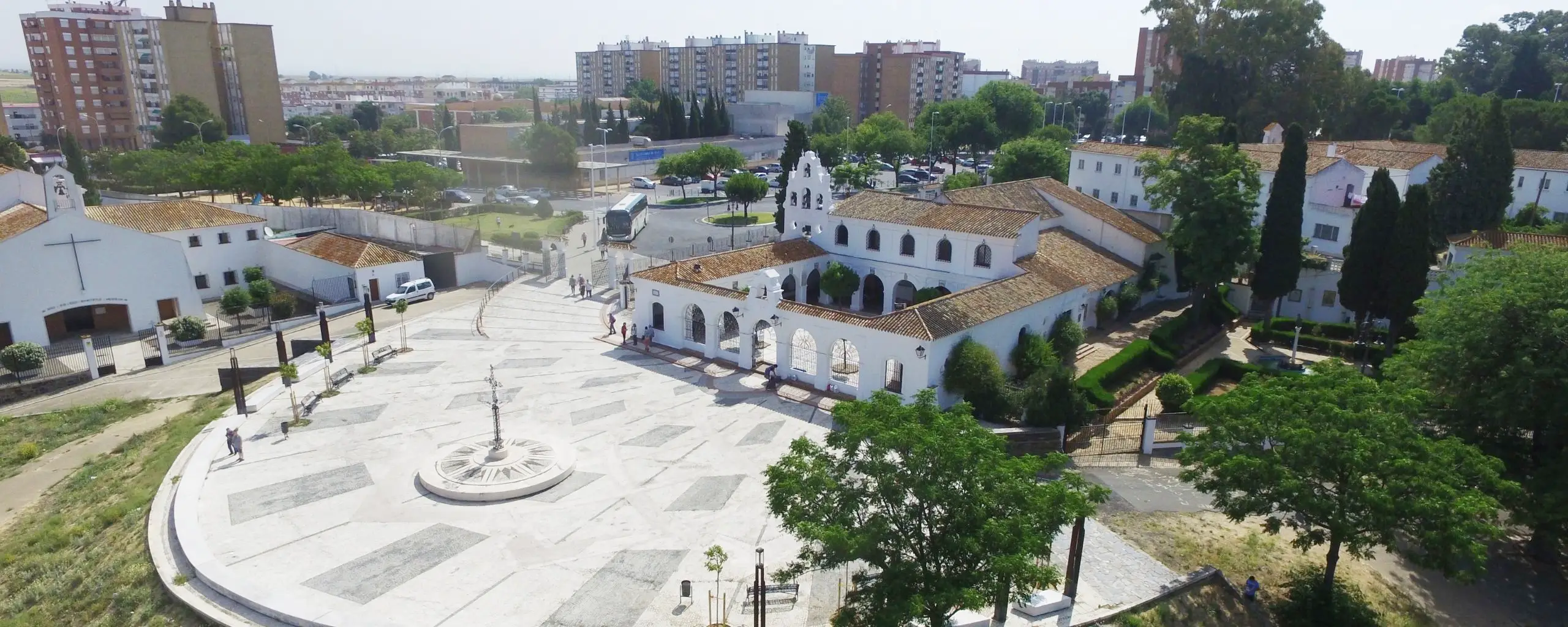Of great relevance for the people of Huelva is the sanctuary that welcomes the patron saint and perpetual mayoress of Huelva, Virgen de la Cinta. Located in one of the unique hills that make up the landscape of Huelva and rooted not only with the architecture of the capital but with its history as a discoverer, it was in this sanctuary where Cristóbal Colón prayed after his first trip to thank the success of the expedition. It was March 3, 1493. The admiral and his sailors had reached America and were crossing back across a rough Atlantic that made them fear for their lives. Columbus then promised to pray with faith to Virgen de La Cinta, in this shrine that bears her name, if the hazardous journey brought them to their destination.
In Huelva, Virgen de la Cinta is therefore colombina. The devotion to her image, the creation of her hermandad, the construction of this sanctuary in her honor dates back to the 15th century and its origin is closely related to the adventure of the Discovery. Sailors from the area, who sailed from this city to the Americas, were already devotees of the Virgin, who is carried in procession every September 8 as patron saint of Huelva.

It is a Gothic-Mudejar building from the 15th century, transformed and used in different ways throughout its history. It has a rectangular floor plan divided into two distinct parts, reminiscent of Muslim Mosque floors.
The first part is formed by a courtyard with lattice access, three of its four sides have arcaded galleries with semicircular arches, being in the gallery on the east side where in the eighteenth century a second floor was built, which is the one that is topped with a belfry of two structures. The access to the sanctuary itself is through three doors of the XVI century formed by pointed horseshoe arches of brick.
The oratory is made up of three naves, the central nave being wider than the side naves and covered with a pair and knuckle truss whose suspenders are carved and whose chevet is flat. The two lateral naves are also finished off with a rectangular chancel and wooden roofs with a single pitched roof.
It is important to mention the main altarpiece of the sanctuary of wood and polychrome stewed eighteenth century where the mural painting of the Virgen de la Cinta in oil is located. It is also found in the sanctuary the carving of the Virgin, which faithfully reproduces the mural painting, dated around 1760 in wood and polychrome stewed attributed to the artistic circle of the Sevillian sculptor Benito Hita del Castillo.
La Cinta Sanctuary is located on Calle Obispo Lahiguera, s/n, in the Cabezo de El Conquero, so, in addition to the building itself, it offers spectacular views of the marshes.
The Sanctuary can be visited:
Monday to Saturday from 09:00 h to 13:00 h and 16:30 h to 19:30 h.
Sundays and holidays from 09:30h to 13:30h and 16:30h to 19:00h.
Masses: from Tuesday to Saturday at 6:30 p.m. and Sunday at 11:00 a.m.